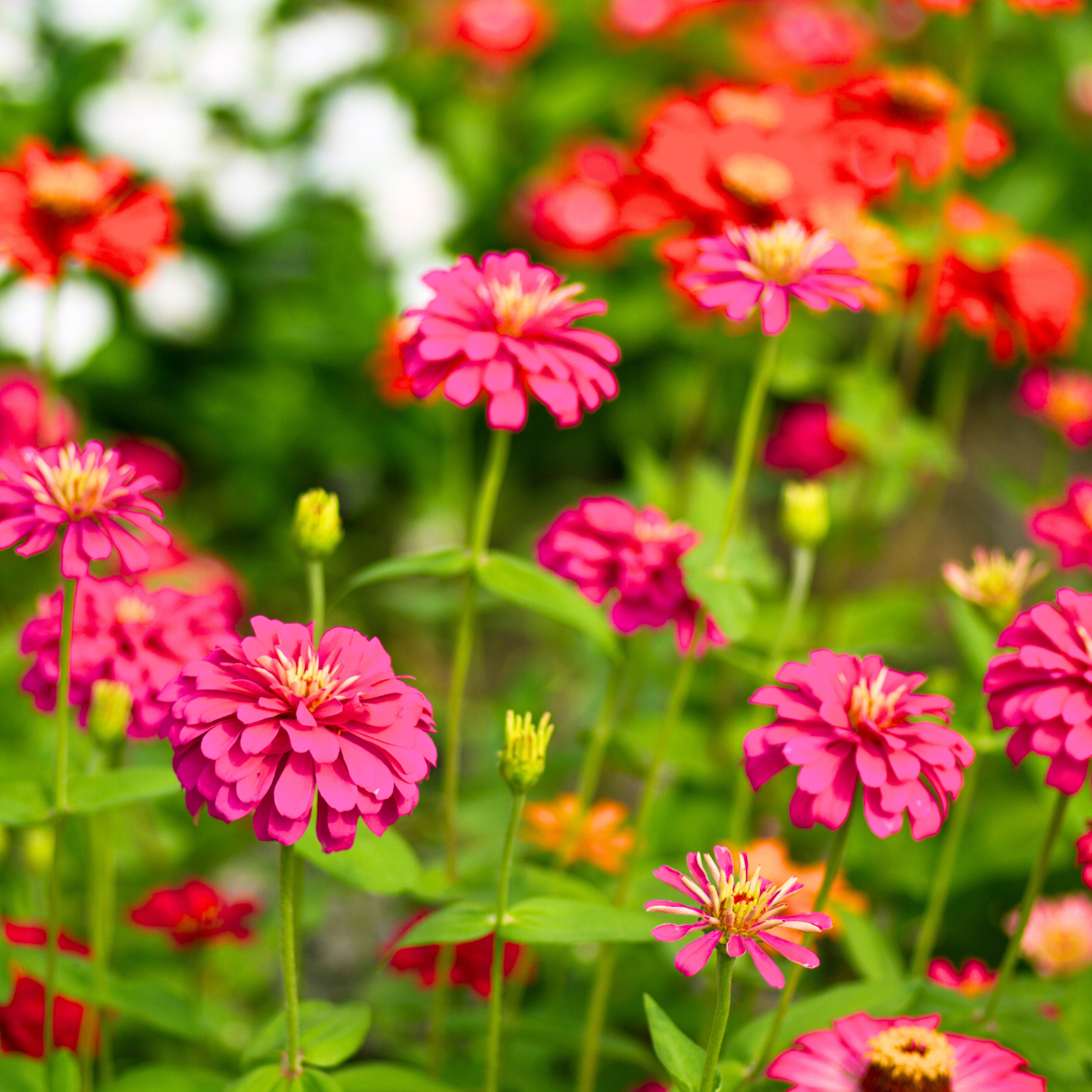Do you dream of a zinnia garden bursting with vibrant colors and lush blooms? If so, you’re in luck. In this article, we will uncover the secrets to transforming your zinnia garden into a stunning oasis of beauty and abundance. From choosing the perfect location and soil to mastering watering techniques and preventing common pests, we’ve got you covered. Get ready to revolutionize your zinnia garden with these proven strategies and unlock its full potential.
This post may contain affiliate links, as an Amazon Associate I earn from qualifying purchases, this is at no extra cost to you
Choosing the Right Location and Soil
When it comes to creating a thriving zinnia garden, choosing the right location and soil is key. Zinnias thrive in full sun, so select a spot in your garden that receives at least 6-8 hours of direct sunlight each day. The more sun the better for these colorful blooms. Additionally, zinnias prefer well-draining soil, so make sure to plant them in soil that is rich in organic matter and has good drainage. You can work in some fresh compost when you plant your seeds, this will help feed your baby zinnias! By selecting the perfect location and soil for your zinnias, you are setting the stage for a garden that will truly flourish.

How to Plant Zinnia
Once your soil is prepped you are ready to plant your zinnia. You will want to wait until the danger of frost has passed before you plant your zinnia. If planting from seed, lightly spread your seed and cover with your prepared soil. Water after you have it covered. Make sure you keep your soil moist while waiting for your seedlings to sprout.
If you are planting a developed zinnia from a nursery, make sure you space each plant at least 4 inches so the plants have adequate space. Water once you have it planted.
Proper Watering Techniques For Growing Zinnia
Proper watering techniques are essential for maintaining the health and vibrancy of your zinnia plants. Zinnias prefer consistently moist soil, so it’s important to water them regularly, especially during dry spells. However, be cautious not to overwater, as this can lead to root rot and other issues. To determine when your zinnias need water, simply stick your finger into the soil; if it feels dry an inch below the surface, it’s time to water.
By mastering the art of proper watering, you’ll ensure that your zinnia garden remains lush and beautiful. Feeding and fertilizing for optimal growth goes hand in hand with proper watering, providing your zinnias with the essential nutrients they need to thrive.

Feeding and Fertilizing for Optimal Growth
For optimal growth and vibrant blooms, it’s crucial to feed and fertilize your zinnia garden regularly. Zinnias are heavy feeders and require rich, well-balanced soil to thrive. Consider using a slow-release fertilizer high in phosphorus to promote flower production. You can also incorporate compost or organic matter into the soil to provide a steady supply of nutrients. Remember to follow the recommended guidelines on the fertilizer package to avoid overfeeding, which can harm your plants. With the right feeding and fertilizing regimen, your zinnias will have the nourishment they need to reach their full potential.
Deadheading and pruning for continuous blooms is another key aspect of zinnia care, ensuring that your garden remains vibrant and colorful throughout the growing season.
Deadheading and Pruning for Continuous Blooms
To keep your zinnia garden looking its best, deadheading and pruning are essential practices. Deadheading, which involves removing faded blooms, encourages the plant to produce new flowers continuously. Simply pinch off the spent flowers where they meet the stem to promote fresh growth. Additionally, regular pruning helps maintain the shape and size of your zinnia plants, preventing them from becoming leggy or overcrowded. By trimming back any damaged or overgrown branches, you can stimulate new growth and improve overall plant health. These simple tasks, when done regularly, will help your zinnia garden flourish with abundant blooms all season long.
Preventing common pests and diseases is crucial for protecting your zinnias and ensuring they continue to thrive.
Preventing Common Pests and Diseases
Preventing common pests and diseases is crucial for protecting your zinnias and ensuring they continue to thrive. Keeping a close eye on your zinnia plants for signs of common pests such as aphids, spider mites, or powdery mildew can help you catch and address issues early on. Regularly inspecting the leaves, stems, and flowers for any unusual discoloration or damage can help you identify potential problems before they escalate. Additionally, practicing good garden hygiene by clearing away debris, maintaining proper spacing between plants, and providing adequate airflow can help prevent the spread of diseases. By taking proactive steps to protect your zinnias from pests and diseases, you can enjoy a healthy and vibrant garden throughout the growing season.

Incorporating the right location, soil, watering techniques, feeding, deadheading, and pest prevention strategies can truly revolutionize your zinnia garden. With a little effort and attention to detail, you can create a vibrant and thriving oasis bursting with beauty and abundance. So don’t wait any longer – take action today and watch as your zinnia garden blooms like never before. As the saying goes, “The flower that blooms in adversity is the most rare and beautiful of all.”
For more gardening tips, check out these:
Spring Lawn Care For Beautiful Yards
How to Grow the Best Tomato Plants: A Step-by-Step Guide for Beginners






